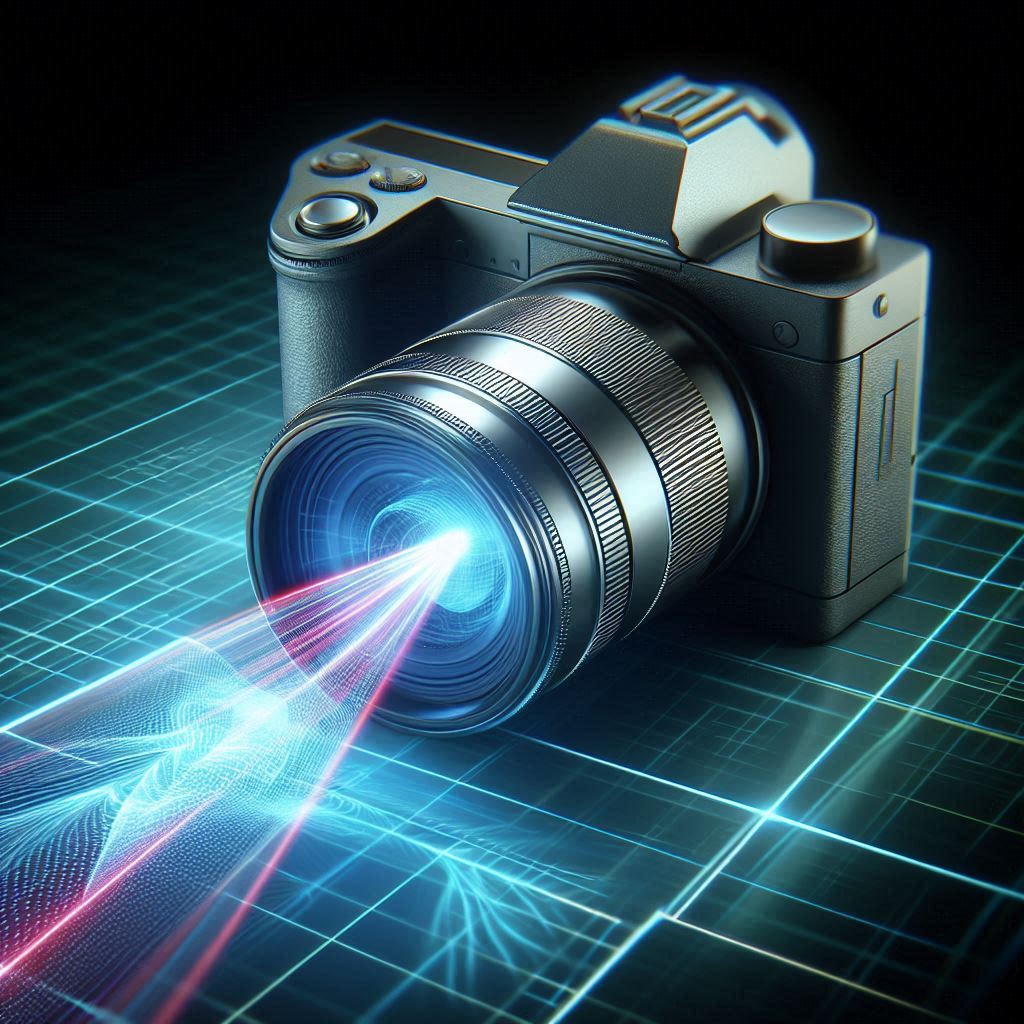Introduction: The Quantum Leap in Display Technology
The consumer electronics industry is constantly evolving, propelled by an unwavering drive for innovation. Every year, new technologies emerge that redefine our expectations of what our devices can do, how they perform, and how we interact with them. One of the most promising advancements on the horizon is the advent of quantum dot lasers. While quantum dots are already known for their role in enhancing display technologies with vibrant colors and improved energy efficiency, their integration into laser technology promises to revolutionize consumer electronics. Discover how quantum dot lasers will redefine smartphones, TVs, and VR systems, transforming our interaction with technology.

Understanding Quantum Dot Lasers
To grasp the full potential of quantum lasers, it’s important to first understand what quantum dots are and how they function in laser technology. Quantum dots are nanoscale semiconductor particles that can emit light when excited by an external energy source. These particles are incredibly small—on the order of a few nanometers in diameter—yet they possess the unique property of size-dependent emission. In simpler terms, the color (or wavelength) of light emitted by a quantum dot is determined by its size. This tunable nature allows for the creation of lasers that can emit light at very specific wavelengths.
Quantum dot lasers differ significantly from traditional lasers in several key aspects:
- Tunable Wavelengths: Traditional lasers are typically limited to specific wavelengths based on the materials used in their construction. Quantum dot lasers, however, can be precisely engineered to emit light at a wide range of wavelengths by simply adjusting the size of the quantum dots. This flexibility opens up a myriad of applications in consumer electronics, where different devices may require lasers of varying colors and intensities.
- Energy Efficiency: Quantum lasers are inherently more energy-efficient than their conventional counterparts. This is due to the high quantum efficiency of quantum dots, which means they can produce more light with less energy. In a world increasingly concerned with sustainability and energy conservation, this is a significant advantage.
- Compact Size: The nanoscale dimensions of quantum dots allow for the development of extremely compact laser devices. This is particularly important in the design of portable and wearable electronics, where space is at a premium. Quantum dot lasers can be integrated into devices without significantly increasing their size or weight, making them ideal for next-generation gadgets.
Applications of Quantum Dot Lasers in Consumer Electronics
The potential applications of quantum lasers in consumer electronics are vast, with the technology promising to enhance performance and introduce new features across a wide range of devices. As research and development continue to advance, quantum dot lasers are poised to become a cornerstone of various consumer electronics platforms.
Enhanced Displays: A New Era of Visual Excellence
One of the most immediate and impactful applications of quantum dot lasers is in the realm of display technology. Today’s displays, whether they are based on LED, OLED, or LCD technology, have inherent limitations when it comes to color accuracy, brightness, and energy efficiency. Quantum dot lasers offer a compelling solution to these challenges, potentially leading to displays that are not only brighter and more colorful but also more energy-efficient.
For instance, quantum dot laser displays could be used in high-definition televisions (HDTVs), computer monitors, and smartphones, providing users with an unparalleled visual experience. The superior color precision enabled by quantum lasers means that displays can reproduce a broader spectrum of colors, leading to richer and more lifelike images. Additionally, the higher brightness levels achievable with quantum dot lasers ensure that these displays perform well even in brightly lit environments, all while consuming less power than traditional displays.

Moreover, the compact nature of quantum lasers allows for thinner and more lightweight displays, which is particularly beneficial for portable devices such as laptops, tablets, and smartphones. As the demand for high-resolution displays continues to grow, quantum dot lasers are likely to play a key role in meeting consumer expectations for top-tier visual quality.
Revolutionizing Virtual and Augmented Reality (VR/AR)
Virtual reality (VR) and augmented reality (AR) technologies are at the forefront of immersive experiences, offering users the ability to interact with digital content in new and exciting ways. However, the effectiveness of VR and AR systems largely depends on the quality of the light sources used in these devices. Quantum dot lasers, with their superior color accuracy and low latency, are ideally suited for enhancing VR and AR experiences.
In VR applications, for example, quantum dot lasers can provide sharper and more vibrant images, which are crucial for creating a convincing and immersive virtual environment. The reduced latency of quantum lasers means that the visuals respond more quickly to user movements, reducing the likelihood of motion sickness—a common issue with current VR systems. This makes quantum dot lasers particularly valuable for gaming, virtual tourism, and remote collaboration, where the quality of the visual experience is paramount.

In AR applications, the ability to project precise and accurate images onto real-world environments is essential. Quantum dot lasers can enable more realistic overlays, improving the overall user experience in applications ranging from AR-based navigation systems to interactive educational tools. As AR technology becomes more integrated into everyday devices, such as smartphones and smart glasses, the role of quantum dot lasers will only grow in importance.
Holographic Displays: Bringing Sci-Fi to Life
Holographic displays have long been a staple of science fiction, promising a future where three-dimensional images can be projected into space, viewed from any angle, and interacted with in real time. While true holography remains a challenging goal, quantum dot lasers bring us closer to realizing this vision.
Unlike traditional two-dimensional displays, holographic displays require lasers that can emit light at precise wavelengths to create the interference patterns necessary for generating three-dimensional images. Quantum dot lasers, with their tunable and precise emission properties, are perfectly suited for this task. The potential applications of holographic displays in consumer electronics are vast, ranging from smartphones and tablets to large-scale applications like holographic televisions and interactive advertising displays.

Imagine a future where your smartphone projects a 3D hologram of a friend during a video call, or where you can browse products in a virtual store using a holographic interface. Quantum dot lasers could make these scenarios a reality, offering consumers a new and exciting way to interact with digital content.
Advanced Imaging Systems: Precision at the Nanoscale
In addition to their applications in displays, quantum dot lasers have the potential to revolutionize imaging systems, particularly in digital cameras and medical devices. The ability to produce precise and tunable wavelengths of light allows quantum dot lasers to enhance the resolution, sensitivity, and overall performance of imaging systems.
Quantum dot lasers could enable more accurate color reproduction for digital cameras, particularly in challenging lighting conditions. This would result in photographs with richer colors and greater detail, appealing to both amateur and professional photographers. Moreover, quantum dot lasers could improve low-light performance, allowing for clearer and more detailed images in situations where traditional cameras might struggle.

In the medical field, quantum dot lasers could be used in advanced imaging techniques, such as fluorescence microscopy and optical coherence tomography (OCT). These applications require precise control over the wavelength and intensity of the light used to illuminate tissues and other biological samples. Quantum dot lasers offer the ability to tailor these properties with unprecedented precision, potentially leading to earlier and more accurate diagnoses of medical conditions.
Optical Data Storage and Communication: The Future of Connectivity
As the demand for data storage and communication continues to grow, new technologies are needed to keep pace with the increasing volume and complexity of digital information. Quantum lasers could play a pivotal role in the development of next-generation optical data storage and communication systems, offering faster, more efficient, and more reliable solutions.
Optical data storage relies on the precise encoding of information using light. The tunability and efficiency of quantum dot lasers make them ideal for this purpose, enabling higher data densities and faster read/write speeds compared to traditional optical storage technologies. This could lead to the development of ultra-high-capacity storage devices, capable of storing vast amounts of data in a compact form factor.

In the realm of optical communication, quantum dot lasers could enable faster and more efficient transmission of data over fiber-optic networks. This is crucial for meeting the ever-growing data demands of modern devices, particularly as the Internet of Things (IoT), 5G, and other data-intensive technologies continue to expand. By improving the speed and reliability of optical communication systems, quantum dot lasers could help ensure that our digital infrastructure can keep up with future demands.
Challenges and Future Prospects
While the potential of quantum dot lasers in consumer electronics is immense, several challenges must be addressed before the technology can be fully realized and adopted on a large scale.
Manufacturing Complexity: The Quest for Consistency
One of the primary challenges associated with quantum lasers is the complexity of manufacturing quantum dots at scale. Producing quantum dots with consistent size, shape, and composition ensures that the resulting lasers perform reliably and meet the desired specifications.
The process of synthesizing quantum dots involves precise control over the chemical reactions used to create them. Even slight variations in the synthesis process can result in quantum dots with different sizes and properties, leading to inconsistencies in the performance of the lasers. This variability increases the cost of production and presents a significant hurdle to the widespread adoption of quantum dot lasers in consumer electronics.
Researchers are actively working to develop more reliable and scalable methods for producing quantum dots, to reduce costs and improve consistency. Advances in colloidal quantum dot synthesis, which involves suspending quantum dots in a solution, have shown promise in this regard. As these techniques continue to improve, the commercialization of quantum lasers is likely to accelerate, making them more accessible for integration into mainstream consumer electronics.
Stability and Lifespan: Ensuring Longevity in Consumer Devices
Another challenge faced by quantum lasers is ensuring their stability and lifespan in real-world applications. Consumer electronics are often used in demanding environments where devices are exposed to factors such as heat, humidity, and physical wear and tear. For quantum dot lasers to be viable for consumer electronics, they must maintain their performance over extended periods and withstand these environmental challenges.
One of the concerns with quantum dots is their susceptibility to oxidation and degradation, particularly when exposed to air and moisture. This can cause a reduction in the efficiency and brightness of the lasers with time. Researchers are addressing this issue by developing protective coatings and encapsulation techniques that can shield quantum dots from the environment and extend their operational lifespan.
Improving the stability and durability of quantum lasers will be critical for their successful integration into consumer electronics. Ongoing research in this area, combined with advancements in materials science, holds the potential to create robust quantum dot lasers that can endure the rigors of everyday use without compromising performance.
Integration with Existing Technologies: A Seamless Transition
For quantum dot lasers to truly transform consumer electronics, they must be seamlessly integrated into existing device architectures and systems. This poses another challenge, as many current electronic devices are not designed to accommodate the unique properties of dot lasers.
Integrating quantum dot lasers into devices such as smartphones, televisions, and cameras may require redesigning components and creating new hardware interfaces. Additionally, the control systems used to drive these lasers must be optimized to take full advantage of their tunability and efficiency. This process can be time-consuming and costly, but the potential benefits in terms of performance, energy efficiency, and user experience make it a worthwhile investment for manufacturers.
Furthermore, quantum lasers must be compatible with existing manufacturing processes to ensure that they can be produced at scale without significant disruptions to supply chains. Collaborations between materials scientists, engineers, and manufacturers will be essential for overcoming these challenges and facilitating the widespread adoption of quantum dot lasers in consumer electronics.
Future Prospects: The Bright Path Ahead
Despite the challenges, the future of quantum dot lasers looks exceptionally promising. Recent breakthroughs in colloidal quantum dot lasers, which are both more cost-effective and versatile than their traditional counterparts, indicate that widespread commercial viability may soon be within reach.
As the cost of production decreases and stability issues are resolved, quantum dot lasers are likely to find their way into a wide range of consumer electronics, from smartphones and televisions to wearable devices and advanced imaging systems. The versatility of dot lasers, combined with their energy efficiency and compact size, makes them a highly attractive option for manufacturers looking to push the boundaries of what their devices can do.
In the coming years, we can expect to see quantum dot lasers not only enhancing existing technologies but also enabling entirely new categories of devices and experiences. From holographic displays that bring digital content to life in three dimensions to advanced imaging systems that revolutionize fields like photography and medicine, the potential applications of quantum lasers are limited only by our imagination.
Conclusion: A Quantum Leap in Consumer Electronics
In conclusion, quantum dot lasers represent a groundbreaking advancement in the field of consumer electronics, with the potential to transform the way we interact with technology. From their ability to produce tunable wavelengths and deliver superior color accuracy to their energy efficiency and compact size, quantum lasers offer numerous advantages over traditional laser technologies. These attributes make them well-suited for a wide range of applications, including enhanced displays, virtual and augmented reality systems, holographic displays, advanced imaging technologies, and optical data storage.
While there are still challenges to overcome, particularly in terms of manufacturing complexity, stability, and integration with existing technologies, ongoing research and development efforts are paving the way for quantum dot lasers to become a mainstream technology in consumer electronics. As these challenges are addressed, the adoption of quantum dot lasers is expected to accelerate, bringing with it a host of new innovations and capabilities.
The future of quantum dot lasers is undoubtedly bright, and their impact on consumer electronics is only just beginning. As we look ahead to a world where displays are more vibrant, VR experiences are more immersive, and holographic interfaces are a reality, quantum lasers will be at the forefront of this technological revolution. For consumers, this means a more vivid, efficient, and interactive digital experience that will redefine the way we engage with our devices.
By staying ahead of the curve and embracing the possibilities offered by quantum dot lasers, manufacturers and consumers alike stand to benefit from the next quantum leap in consumer electronics.







Thank you so much Yuvraj. It is very insightful and illustration is very much understandable. It has arisen my curiosity in the field to next level. Looking forward to more and more blogs from you.
Thanks